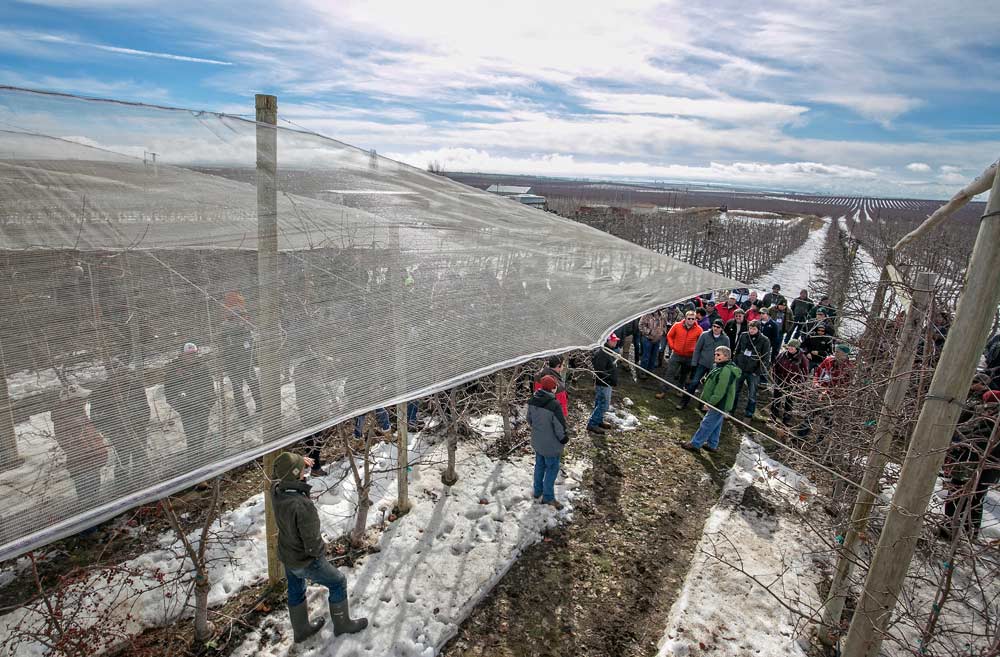Finding the ideal system for your orchards can be trial and error, but luckily, Mike Robinson likes to experiment.
Robinson shared the results of several experiments with attendees of the IFTA tour at the orchard he co-owns in Royal Slope, Washington.
The 110-acre orchard has two blocks of Honeycrisp, one with bi-axis trees and one with single-leader trees.
With 622 trees per acre in both blocks, the bi-axis orchard is far more productive, yielding 79 bins per acre compared to the 48 in the single-leader system.
The orchard also has organic Galas and Fujis, which means that Robinson sticks to a minimal spray program across the entire orchard.
Right now, Robinson is focused on figuring out if he can convert existing Honeycrisp orchards to be picked by an automated harvester.
He recently tested out a mechanical hedger to see if it could help him create a mechanical harvest-friendly fruiting wall, but the impacts were lackluster. That’s because the hedger left stubbed-back branches sticking out into the row.
“We can’t have that hard wood sticking out. We need to hand prune it and train it first to get that wood out of it. … Mechanical hedging doesn’t fit the picker we are trying to get,” Robinson said. And it may be that the work of adapting the orchards to that picker isn’t going to yield the best results. “I’m not going to give up a bunch of bins of Honeycrisp to do this,” he said.
One experiment that is paying off is the louvered shade cloth Robinson has installed above the entire orchard.

Mike Robinson, below in green jacket, shows the 2017 IFTA tour group a louvered cover that not only allows for light penetration during the early parts of the day but protects his Honeycrisp trees from hot afternoon sun. (TJ Mullinax/Good Fruit Grower)
It’s sun protection that has the added benefit of hail protection, since the past three hailstorms came, like the late afternoon sun, from Portland, Oregon, he joked.
The cloth provides 22 percent light reduction, but only when the sun is shining in the west.
“This way, I get full light on my trees until after lunch,” Robinson said. That strategy has not been borne out by research trials yet, but he said it seems logical. Setting up the cloth cost about $3,500 an acre — $2,500 for the fabric, $500 for the additional equipment and $500 for the labor.
The payoff is that he doesn’t need to use overhead cooling.
“For me, the major attraction is the water management,” Robinson said. “I hate cooling because I like to control growth with water. With organics, water is about the only tool that you have.” •
– by Kate Prengaman






Leave A Comment